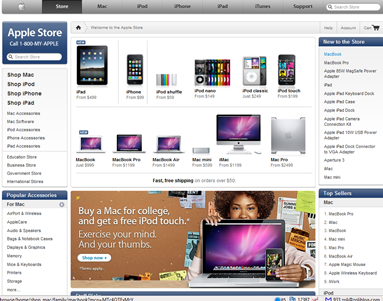 “There is an App for that” – is the mantra nowadays, and I really hoped for one, to solve the major task of telling me where I can buy an iPad. Anywhere, in any physical store along my long drive from San Francisco to Pleasanton. In the real-time, always-on age it should not be a big deal. But it is.
“There is an App for that” – is the mantra nowadays, and I really hoped for one, to solve the major task of telling me where I can buy an iPad. Anywhere, in any physical store along my long drive from San Francisco to Pleasanton. In the real-time, always-on age it should not be a big deal. But it is.
Of the two potential sources Best Buy fares better: at least they have an online inventory locator, which tells you none of the stores have it 🙁
Apple stores (the best retail experience in any industry)? Fuhhgedaboudit. You can order online and wait two weeks for delivery, find retail stores, even make personal shopping appointments, but the online system can’t tell you availability in the individual stores. But the Apple site certainly looks better than Best Buys. Design without content. 🙁
So I am back to the Stone Age method: calling stores one by one. At least my smartphone helps with that: Google Maps pulls up the stores in the area, and I can touch to call them one by one. All Apple stores answer with this message:
Thank you for calling the Apple Store in ….. The magical and revolutionary iPad is now available…
Except it’s not. Available. You have to get to a live salesperson, store by store, to get that information. The welcome message is a cheery lie. Once again, Best Buy fares better: the welcome message apologizes that they did not receive new shipments, and all their stores are out of iPad inventory.
So that leaves me with one choice: ordering the iPad online. Which I did. And don’t get me started on how many things went wrong during the order process…
I know, I deserve it. After all on the long ride from Google I/O @ Moscone to Pleasanton I had two gorgeous smartphones next to me, on the passenger seat. Both Android. 🙂

(Cross-posted @ CloudAve)




 If you think this is yet-another post on Platform as a Service, you’re wrong. I’ll be talking about much simpler things here:
If you think this is yet-another post on Platform as a Service, you’re wrong. I’ll be talking about much simpler things here:



Recent Comments